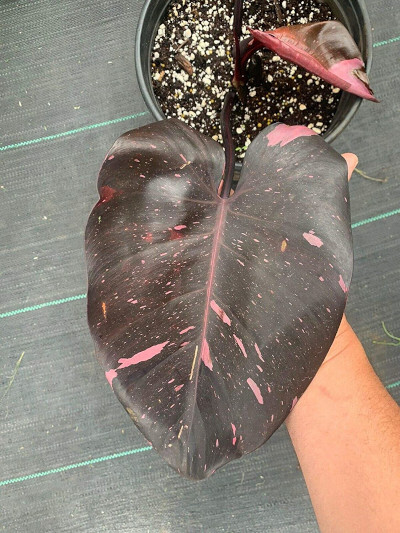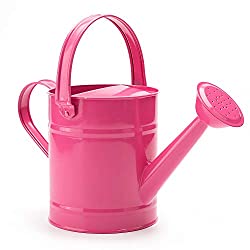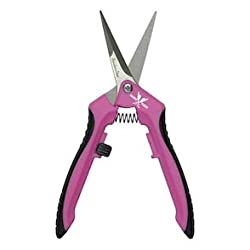
If you're lucky enough to find a Pink Princess Philodendron in a nursery or online then snap it up straight away. Black foliage is rare in nature, so this really does make for a stunning indoor plant display. New leaves start out dark green with white variegation and mature to black with hot pink splashes. Keep in mind that this plant does not travel well and may show signs of distress. Give it time and it will return to it's full beauty.
Light and Position
Like all philodendron, the Pink Princess likes lots of indirect bright sunlight to bring out the very best colours possible. Be careful in direct sun spots as this will damage the leaves. While it’s normal for older leaves to yellow, if this happens to several at the same time, the plant may be getting too much light. On the other hand, if the stems are long and leggy with several inches between the leaves, the plant may not be getting enough light.
Temperature Range
The ideal temperature for this philodendron is between 18-25 degrees centigrade. (65-78F) during the day, and around 15 degrees centigrade (60F) at night.
Watering

Pink Philodendrons in general like to be moist, and should always be well drained. Droopy leaves can mean the plant is getting too much or not enough water, but it will recover quickly when you correct the watering schedule. Automatic watering can be done with watering bulbs (Find on Amazon or Find on Amazon ) to slowly deliver water over a number of days.
Its best to give it a thorough watering and let all the excess water drain away. Then let the surface of the soil dry out before watering thoroughly again. Ideally, let the top 1/2 inch to 1 inch or so dry out. Try to avoid letting the potting mix dry out completely.
Feeding
Feed philodendron houseplants with a balanced liquid foliage houseplant fertilizer (Find on Amazon or Find on Amazon ) that contains macronutrients to stimulate healthy growth. Monthly in spring and summer and every other month from autumn to winter. Slow growth and small leaf size is the plant’s way of telling you it needs more feeding. Pale new leaves usually indicate that the plant isn’t getting enough calcium and magnesium, which are essential micronutrients for philodendrons.
Seasonal Care
This is another great year round plant, just remember to water less in the winter and as this is a vine, stake well for support. A stake or trellis is ideal, tie gently for best results.
Soil
As with any Philodendron, they do best in a soil mixture high in organic matter. You can also use your favorite soilless potting mix, but be sure to add a good amount of perlite (Find on Amazon or Find on Amazon ) to it to make it nice and airy. Philodendrons prefer loose, well-drained soil that is high in organic matter. They will grow in 100% sphagnum peat moss. Soilless mixtures such as peat-vermiculite or peat-perlite are also satisfactory.
Pruning

A balance of non-variegated and variegated leaves is required to maintain a healthy plant. If your plant starts to become overrun with all green leaves, it may become all green in time. On the other hand, if you get all pink leaves or leaves that are more than half pink, your plant will slowly decline because the variegated portions of the leaves have no chlorophyll (a green photosynthetic pigment found in plants vital for growth) at all for the plant to sustain itself. To rectify, simply prune your plant back to the next leaf that has balanced variegation. Of course, if you do get all pink leaves, it is fine to enjoy the beauty for a while. Just don’t leave them on for too long otherwise your plant will start to decline.
Propagation
Take a cutting from a node (the area where the leaf meets the stem) and place into vermiculite under a tented bag. Apply the same care as you would the mother plant. When a node takes root, it usually sends out a new growth tip. Don't forget to label your plants so you can provide proper care for them.
Pests and Diseases
Mealy Bug, Black Leg, Root Failure, Slugs, Sooty Mould
